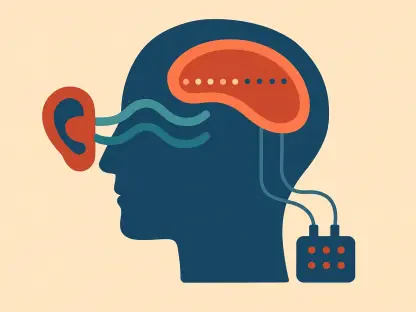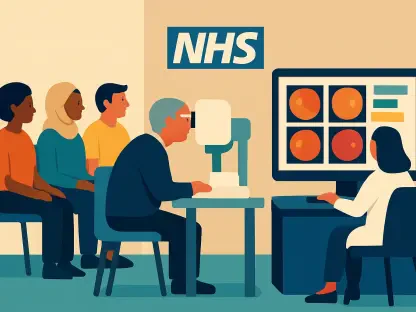Amidst pressing challenges posed by amyotrophic lateral sclerosis (ALS), researchers are harnessing state-of-the-art AI methodologies to repurpose existing medications. ALS, widely recognized as Lou Gehrig’s disease, is a relentless neurodegenerative disorder marked by the deterioration of motor neurons within the brain and spinal cord. This degeneration leads to progressive impairment of mobility and often results in a grim prognosis, with most affected individuals facing mortality within 2–5 years post-diagnosis. Currently, the origins of ALS remain elusive, with treatments offering limited reprieve. The urgent quest for breakthrough solutions has propelled a collaboration between Lawrence Livermore National Laboratory (LLNL), Stanford University, and the University of California, Los Angeles (UCLA), focused on repurposing drugs through cutting-edge AI techniques.
Harnessing AI for Drug Repurposing
Exploring AI/ML in Medical Research
The collaboration between LLNL and its academic partners has leveraged advanced AI/ML techniques to expedite drug repurposing for ALS, a promising avenue given the daunting timeline of traditional drug development. Utilizing sophisticated machine learning algorithms, researchers aim to uncover unforeseen beneficial effects of established medications, thus providing a fast track to viable treatments. This innovative approach relies heavily on long-term electronic health records (EHRs), enabling researchers to analyze drug interactions with heightened precision. Priyadip Ray, a front-runner in this initiative, has underscored the potential to ameliorate the grim outlook for ALS patients by repurposing drugs initially approved for other ailments. This method not only accelerates therapeutic discoveries but also enhances understanding of the disease mechanisms, a key driver for developing tailored treatment strategies in the future.
EHRs Transforming ALS Research
ALS sufferers face unique challenges due to its rarity and rapid progression, complicating the design of extensive clinical trials. Yet, the emergence and accessibility of detailed EHR data offer unprecedented opportunities for the scientific community. Ray’s team exploits causal machine learning to synthetically replicate clinical trials, overcoming traditional limitations by comparing patients who consumed specific medications with those who did not. This allows the extraction of high-confidence findings despite the constraints posed by limited sample size and duration. Initial investigations utilized a modest public dataset to create a surrogate model of ALS progression, which the team then significantly expanded through access to over 20,000 anonymized records from Veterans Affairs. These insights have paved the way for identifying promising drug categories, such as statins and alpha-blockers, that might enhance survival rates in ALS patients.
Collaborative Pursuits and Findings
Pioneering ALS Treatment Strategies
The extensive dataset enabled researchers to pinpoint beneficial drugs, spotlighting statins, alpha-blockers, and PDE5 inhibitors. Notably, combining statins with alpha-blockers emerged as particularly encouraging, reflecting potential synergies that bolster ALS patients’ survival. Supporting studies fortify these revelations, suggesting these drugs as promising candidates for repurposing. In understanding drug interactions at a molecular level, researchers have investigated protein-protein interactions, revealing common downstream targets that these medications affect. This breakthrough not only underscores prospects for enhancing drug efficacy but also opens new avenues for crafting more customized therapeutic approaches for ALS and similar neurodegenerative diseases.
Expanding Research Horizons
The implications of this research transcend ALS, with the team striving to generalize their findings across a wider demographic spectrum. The veteran-dominated data provided rich insights but necessitated further validation to ensure applicability beyond this cohort. Through engagement with the Optum EHR dataset, researchers aspire to secure a more diverse pool of patient records. Such efforts could validate drug repurposing strategies for diverse populations, contributing to the broader spectrum of neurodegenerative diseases, including Parkinson’s. The profound potential of uncovering underlying biological mechanisms through AI analysis signifies an ever-evolving scope of research, promising transformative benefits not only for ALS sufferers but for countless individuals battling similar conditions.
Future Directions and Challenges
Bridging Research and Clinical Application
Transitioning these innovative findings into clinical validations remains pivotal in solidifying ALS treatment regimens officially. Pursuing more funding and engaging broader healthcare communities will facilitate this critical bridge, translating theoretical discoveries into tangible medical advancements. Practical validation tests both efficacy and the revolutionary potential of AI/ML methodologies in refining medical research. Enhancing collaborations between varied organizations and institutions is vital, ensuring systematic integration and widespread acceptance of AI applications within healthcare discourse.
Strategic Momentum for Broader Impact
The comprehensive dataset allowed researchers to identify advantageous medications, notably emphasizing statins, alpha-blockers, and PDE5 inhibitors as promising options. Interestingly, the combination of statins with alpha-blockers has shown particularly promising results, indicating potential synergies that could enhance the survival of ALS patients. These revelations are supported by additional studies that propose these drugs as promising candidates for being repurposed to combat ALS. By delving deeper into the molecular interactions of these drugs, researchers have analyzed protein interactions, discovering that these medications influence common downstream targets. This breakthrough not only highlights potential ways to improve the effectiveness of these drugs but also paves the way for developing more personalized therapeutic strategies not only for ALS but also for similar neurodegenerative diseases. Such advancements hold the key to unlocking new paths in the treatment and management of these challenging illnesses.









